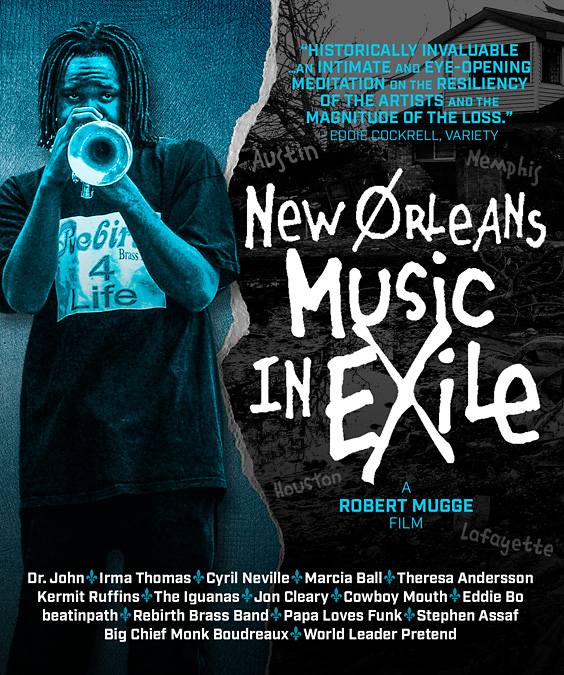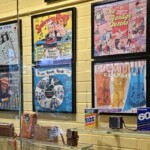 Noted blues and jazz film maker, Robert Mugge, and fellow producer, Diana Zelman, examine the effects of Katrina on the soul of New Orleans – its musicians that are vital to the culture of the city and America at large. Mugge shot the most of the footage only two months after Katrina hit. The viewer moves from vivid scenes of destruction to the displacement of musicians to other locales like Houston, Austin, Memphis and Lafayette; and eventually moves to a feeling of triumph and rebuilding. From afar, we all generally know this story and recognize the importance of music to what makes New Orleans unique. Yet, listening to the musicians tell their stories, to see the relocation first-hand and then how organizations came together for the rebuilding process, is to really appreciate the power of music as a healing force.
Noted blues and jazz film maker, Robert Mugge, and fellow producer, Diana Zelman, examine the effects of Katrina on the soul of New Orleans – its musicians that are vital to the culture of the city and America at large. Mugge shot the most of the footage only two months after Katrina hit. The viewer moves from vivid scenes of destruction to the displacement of musicians to other locales like Houston, Austin, Memphis and Lafayette; and eventually moves to a feeling of triumph and rebuilding. From afar, we all generally know this story and recognize the importance of music to what makes New Orleans unique. Yet, listening to the musicians tell their stories, to see the relocation first-hand and then how organizations came together for the rebuilding process, is to really appreciate the power of music as a healing force.
Dispersed throughout are 24 musical tracks from 16 artists. Most of these artists appear in interviews, and some, like Dr. John and Cyril Neville, appear several times. Joining them in the interviews are club owners, Jan Ramsey of Offbeat Magazine, David Freedman of radio station WWOZ, Times Picayune Music Writer, Keith Spera, and others that have deeply seated knowledge of New Orleans’ musical history. These segments reveal the consequences of the flooding– breached levees, black mold and mind-blowing images of cars in swimming pools, a car in a living room, and a total house uprooted and displaced by twenty yards. As the film unfolds, there are several memorable scenes and quotes. Cyril Neville talks about the importance of musical families in New Orleans, and notes that the city is a collection of villages such that a song like “Hey Pocky Way” will be played differently when moving through various neighborhoods. More than once, he speaks about the importance of the 6th, 7th, 8th and 9th wards, which took the brunt of the damage. Dr. John describes the breached levee as “leftover footage from Hiroshima.” Irma Thomas points out the damages to here club, The Lion’s Den, clearly showing the water lines, the effects of black mold and other destruction, which then shifts to her commitment to begin to rebuild the city.
Moving clips of Kermit Ruffins in Houston, the Iguanas in Austin, Cyril Neville in Austin and Cowboy Mouth in Memphis, as well as Eddie Bo and others in Lafayette, transition to the important role played by organizations like Music Cares, Red Cross and the Tipitina’s Foundation to get the musicians new instruments, shelter and a means to make a livelihood. Toward the end of the documentary, the story shifts to how the neighborhood bars, especially The Maple Leaf Bar and Tipitina’s, led the way to restore music. While the early portions of the film paint a hopeless picture of despair, the undaunted spirit of the musicians and their supporters prevails. The film is filled with indelible images, but its lasting takeaway is how vital music is to the heartbeat of New Orleans, told, played and viewed in intimate detail.
Note: Bonus features include: an 18 minute short about Lafayette public radio executive David Spizale’s personal rescue efforts in New Orleans, Jon Cleary performing “A History of New Orleans Piano,” six additional performances by participating New Orleans musicians and seven extended versions of songs in the film.
-Jim Hynes







Be the first to comment!